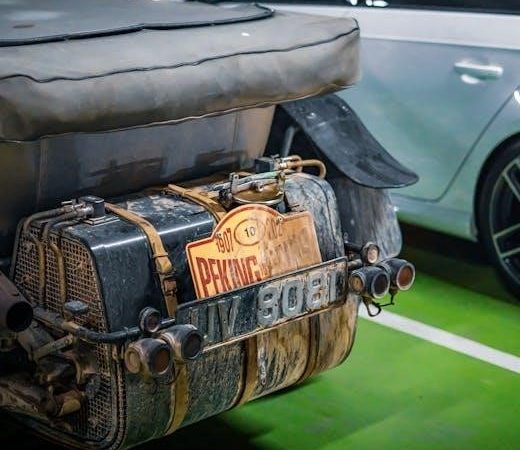a dark room guide
A dark room guide provides essential information on setting up
Purpose of a Dark Room
The purpose of a dark room is to provide a space for photographers to develop and print their photographs, allowing them to have complete control over the creative process. This space is essential for film photography, as it enables photographers to turn their raw negatives into tangible works of art. The dark room serves as an intimate environment that fosters creativity and enhances the overall experience of film photography. With a dark room, photographers can experiment with different techniques and processes, allowing them to produce unique and high-quality prints. The purpose of a dark room is not only to develop and print photographs but also to provide a space for photographers to express their creativity and bring their vision to life. By having a dark room, photographers can take their photography to the next level and produce stunning results.
Setting Up a Dark Room
Setting up a dark room requires careful planning and execution always
Choosing the Right Space
To choose the right space for a dark room, consider the size and layout of the area. A room with minimal natural light is ideal, as it will be easier to achieve total darkness. The space should also be well-ventilated, as chemicals and other materials used in the dark room can release fumes. Additionally, the room should be easily accessible and have enough space to accommodate all the necessary equipment and supplies. It is also important to consider the location of the room, as it should be in a quiet and secluded area to minimize distractions. By carefully evaluating these factors, you can select a space that meets your needs and allows you to create a functional and efficient dark room. The right space is essential for a successful dark room setup and will help you to achieve your photographic goals.
Dividing the Room
Dividing the room into separate areas is crucial for a functional dark room. The room can be divided into a dry side and a wet side, with the dry side housing electrical equipment and the wet side dedicated to developing and printing photographs. This division helps to prevent accidents and ensures that equipment and supplies are organized and easily accessible. The dry side can include a workspace for loading film, a dark room enlarger, and other equipment, while the wet side can include sinks, trays, and other necessary items for developing and printing. By dividing the room in this way, you can create a safe and efficient workspace that meets your needs and allows you to work effectively. This division also helps to maintain a clean and organized environment, which is essential for producing high-quality photographs. Proper division of the room is essential for a successful dark room setup.
Preparing the Room
Preparing the room involves cleaning and organizing the space to ensure
Painting the Walls
When it comes to painting the walls of a dark room, it is essential to choose a color that will not interfere with the photographic process. A neutral color such as white or gray is recommended as it will not reflect any unwanted light or colors. The paint used should also be non-reflective and matte to prevent any glare or reflections. Additionally, it is crucial to ensure that the paint is completely dry before using the dark room to prevent any fumes or chemicals from affecting the photographic materials. By taking the time to properly paint the walls, photographers can create a functional and efficient dark room that will help them to produce high-quality photographs. The right wall color can make a significant difference in the overall quality of the photographs produced in the dark room.
Ensuring Light Tightness
To ensure light tightness in a dark room, it is essential to seal all potential light leaks. This can be achieved by using foam tape or weatherstripping around doors and windows. Any gaps or cracks in the walls or ceiling should also be sealed with a light-tight material. Additionally, the use of blackout curtains or blinds can help to prevent any light from entering the room. By taking these steps, photographers can create a completely dark environment that is necessary for processing photographic materials. A light-tight dark room is crucial for producing high-quality photographs, as any stray light can cause damage to the materials. The process of ensuring light tightness requires attention to detail and a thorough inspection of the room to identify any potential light leaks. This will help to prevent any errors or damage to the photographs.
Beginner’s Guide to Dark Room Photography
Start with basic photography concepts and equipment needs
Selecting the Right Film
To start developing photographs in a dark room, selecting the right film is crucial. Many brands such as Ilford, Kodak, and Fujifilm offer a wide range of films to choose from. Each film has its unique characteristics, such as grain size, contrast, and color palette. The choice of film depends on the desired effect and the photographer’s personal preference. Some films are better suited for portrait photography, while others are ideal for landscape or street photography. It is essential to research and understand the different types of film available to make an informed decision. By selecting the right film, photographers can achieve the desired look and feel for their photographs. This knowledge will help photographers to produce high-quality prints in the dark room. With so many options available, choosing the right film can be a daunting task, but it is a critical step in the photographic process.
Renting a Dark Room
Renting a dark room can be a viable option for photographers who do not have the space or resources to set up their own dark room. Many photography studios and community centers offer dark room rentals for a fee; This can be a great way to access the necessary equipment and facilities to develop and print photographs. When renting a dark room, it is essential to research the facility and ensure that it meets your needs. Some things to consider include the availability of equipment, the condition of the facilities, and the level of supervision or assistance provided. Renting a dark room can be a cost-effective and convenient way to develop and print photographs, and can be a great option for photographers who are just starting out or who only need to use a dark room occasionally. This option allows for flexibility and convenience.
Safety Precautions
Proper safety precautions are necessary to prevent accidents
Common Hazards
There are several common hazards associated with dark room guide, including electrical fires and chemical spills. These hazards can be prevented by taking proper safety precautions and following guidelines.
Proper ventilation is also essential to prevent inhalation of harmful chemicals.
Additionally, it is important to handle equipment and chemicals with care to avoid accidents and spills, ensuring a safe working environment in the dark room.
Minimizing Risks
To minimize risks in a dark room, it is essential to follow proper safety protocols and guidelines.
This includes wearing protective gear such as gloves and goggles, and ensuring that the room is well-ventilated to prevent inhalation of harmful chemicals.
Regular maintenance and inspection of equipment can also help to prevent accidents and minimize risks, providing a safe and healthy environment for working in the dark room.
By taking these precautions, individuals can reduce the risk of injury and ensure a safe and successful dark room experience, allowing them to focus on their work without unnecessary worry or concern.



